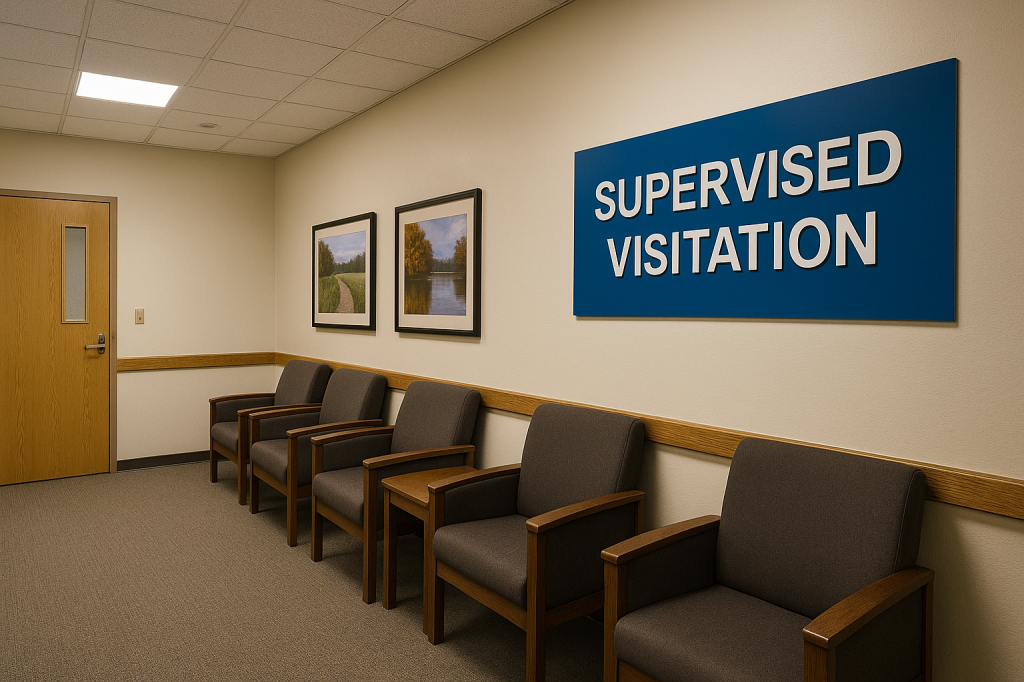Domestic Violence and the Allocation of Parental Rights in Ohio
- Aug 19
- 7 min read
(Prepared for Ohio families by an experienced advocate: Andrew Russ domestic relations attorney)
Domestic violence changes everything about a custody case in Ohio. When safety is at issue, courts
must make parenting decisions that protect children and the abused parent while honoring Ohio’s “best interest” standards. This guide explains how allegations or findings of domestic violence affect the allocation of parental rights and responsibilities.

Key Takeaways (Quick Read)
Ohio judges must put safety first. A history of domestic violence weighs heavily when the court allocates parental rights or sets parenting time. See Ohio’s core custody statute, R.C. 3109.04, and the visitation/parenting-time statute, R.C. 3109.051. (Ohio Laws)
Protection orders can include temporary child-related terms. A Domestic Violence Civil Protection Order (DVCPO) under R.C. 3113.31 may include temporary custody and parenting-time provisions to keep children safe. (Ohio Laws)
Domestic violence is both a civil and criminal issue. Ohio’s criminal DV statute (R.C. 2919.25) defines the offense and who counts as a “family or household member.” Civil protective orders are separate but often run alongside custody cases. (Ohio Laws)
Courts have many safety tools. Supervised exchanges, no-contact provisions, supervised parenting time, restrictions on alcohol/drug use during parenting time, and communication protocols are common remedies recognized in Ohio resources for judges. (Supreme Court of Ohio)

What Counts as Domestic Violence in Ohio?
Ohio law addresses domestic violence in multiple places:
Criminal law (R.C. 2919.25): Prohibits causing or attempting to cause physical harm to a family or household member, recklessly causing serious physical harm, or threatening imminent harm. Convictions or arrests can factor into custody decisions. (Ohio Laws)
Civil protection (R.C. 3113.31): Lets a court issue a Domestic Violence Civil Protection Order (DVCPO) to prevent further abuse. A DVCPO can include child-related terms such as temporary custody, visitation limits, and safe exchange conditions when appropriate. (Ohio Laws)
“Family or household member” is defined broadly in Ohio law and includes spouses, former spouses, those living together as a spouse, persons related by blood or marriage living in the household, and parents/children. Whether a person meets this definition matters in DV and custody proceedings. (Ohio Laws)

How Ohio Courts Allocate Parental Rights When DV Is Alleged or Proven
Ohio courts decide who makes major decisions and where children live using the “best interest” framework in R.C. 3109.04. The statute lists factors that judges must weigh, including any history of domestic violence or child abuse/neglect. A judge can award:
Sole allocation (one parent is the residential parent/legal custodian), or
Shared parenting (both parents share decision-making under a court-approved plan).
A documented history of domestic violence often cuts against shared parenting because cooperation and safe co-parenting are central to shared arrangements; courts must ensure any plan can be implemented without exposing children or the abused parent to harm. (Ohio Laws)
Ohio’s Domestic Relations Resource Guide flags common misconceptions—such as the assumption that joint decision-making is always best or that abuse of a parent does not impact the child. In reality, research shows abuse often escalates post-separation, and exposure to parental abuse can harm children even if they are not the direct targets. Judges are encouraged to factor this into custody and parenting-time decisions. (Supreme Court of Ohio)
Parenting Time, Safety, and Restrictions the Court May Use
Under R.C. 3109.051, Ohio judges set parenting-time schedules that serve the child’s best interests. Where domestic violence is at issue, courts commonly build in safety structures, including: (Ohio Laws)
Supervised parenting time with a professional center or trusted third party.
Supervised exchanges at neutral locations (e.g., police station lobby, supervised visitation center).
No-contact or limited-contact protocols between parents, often via co-parenting apps.
Substance-use conditions during parenting time (no alcohol; compliance testing when appropriate).
Curfew or overnights restrictions (e.g., no overnights until safety benchmarks are met).
Therapy, batterer’s intervention, or parenting classes as prerequisites to expanded time.
The Supreme Court of Ohio’s domestic-violence and parenting-time publications provide judges with checklists and examples of safety-focused orders—reinforcing that tailored conditions (not one-size-fits-all schedules) are best when abuse is present. (Supreme Court of Ohio)
Civil Protection Orders and the Custody Case: How They Interact
If you obtain a DVCPO under R.C. 3113.31, the order can:
Restrict or prohibit contact,
Specify temporary custody and parenting time, and
Establish safe exchange terms.
Courts try to avoid conflicts between a DVCPO and a domestic relations order. If your custody case is already pending, the domestic relations judge may adjust parenting terms to ensure consistent, safety-first conditions across both cases. (Ohio Laws)
Evidence the Court Considers in DV-Related Custody Cases
Judges look for credible, specific evidence:
Police reports, incident logs, and criminal case records
Medical or mental-health records documenting injuries or trauma
Photos, videos, 911 calls
Texts, emails, and social media messages showing threats or harassment
Witness testimony (neighbors, family, teachers, counselors)
Guardian ad Litem (GAL) reports and recommendations
Proof of participation in counseling, Batterer’s Intervention Programs (BIP), or substance-use treatment
Ohio judicial materials emphasize child-focused safety planning rather than blanket assumptions. For example, if contact is allowed, courts often pair limited, structured parenting time with safety mechanisms (neutral exchanges, supervised visits). (Supreme Court of Ohio)
When DV Is Alleged
Ohio’s judicial resources stress that parenting plans in abuse cases should be graduated and safety-driven, not punitive for its own sake. (Supreme Court of Ohio)

Practical Safety Tools the Court May Order (Examples)
Supervised Visitation: A professional monitors interactions to protect children and reassure the court.
Neutral Exchange Site: Safe drop-off/pick-up with staggered arrival times.
No-Alcohol/Drug Conditions: Prohibit use within 24 hours of parenting time; testing when indicated.
Communication Limits: Use co-parenting apps; emergency-only exceptions.
Firearm Restrictions: Consistent with protection orders and federal law, as applicable.
Travel and Overnight Limits: Especially with very young children or where coercive control is documented.
These tools appear across Ohio guidance for judges and align with R.C. 3109.051 factors that allow tailored schedules based on safety needs. (Ohio Laws, Supreme Court of Ohio)

How Andrew Russ, Domestic Relations Attorney, Can Help
In cases involving domestic violence, your lawyer’s role is part legal strategist, part safety planner:
Emergency Relief: Drafting and filing a DVCPO petition, preparing you for your ex parte and full hearings, and aligning any temporary custody terms with your domestic relations case. (Ohio Laws)
Evidence Development: Organizing police records, medical documentation, digital evidence, and witness testimony; working with experts where necessary.
Guardian ad Litem Strategy: Requesting a GAL where appropriate and ensuring the court has a child-focused record.
Parenting Plan Design: Proposing structured, safe parenting time or shared-decision frameworks only where safe—drawing from Ohio judicial resources. (Supreme Court of Ohio)
Coordinating Parallel Cases: Avoiding conflicts between criminal, juvenile, and domestic relations matters.
Local Knowledge: Procedures vary by county; Franklin and Athens Counties have distinct forms, schedules, and visitation center resources. Local counsel helps you move faster and safer.
If you need a plan tailored to your family, contact Andrew Russ, domestic relations attorney, to discuss options for immediate protection and long-term parenting arrangements that prioritize your child’s well-being.

FAQs
Q1: Will a protection order automatically stop all parenting time? Not necessarily. A DVCPO can prohibit contact or allow limited, supervised contact with strict conditions. The domestic relations court can later refine parenting terms to remain consistent with safety. (Ohio Laws)
Q2: Can the court award shared parenting when there’s domestic violence? It depends on the evidence, but R.C. 3109.04 requires courts to weigh abuse history. Shared parenting demands high cooperation and low conflict; documented abuse often pushes courts toward sole allocation with structured time for the other parent. (Ohio Laws)
Q3: What factors do judges consider when setting parenting time? Under R.C. 3109.051, courts consider many factors—child’s age, wishes (when appropriate), safety concerns, history of abuse, and logistics—then design a plan that protects the child. (Ohio Laws)
Q4: Do criminal DV charges have to be proven before the family court acts? No. Family courts can act based on credible evidence and protective-order findings to protect children, even if a criminal case is pending or unresolved. The criminal statute is R.C. 2919.25; protective orders are civil under R.C. 3113.31. (Ohio Laws)
Q5: Where can I learn more about safe parenting plans in DV cases? The Supreme Court of Ohio publishes resources on DV and parenting time, including safety-planning checklists and a parenting-time guide for separated parents. (Supreme Court of Ohio)
When domestic violence intersects with custody, the stakes are highest. The court’s job is to protect children and craft parenting arrangements that promote stability and safety. If you need immediate, practical help in Columbus, Athens, or anywhere in Ohio, reach out to Andrew Russ, domestic relations attorney, for a confidential consultation.
Citations & References:
Allocation of parental rights (best-interest standards; shared parenting). Ohio Rev. Code 3109.04. (Ohio Laws)
Parenting time factors and safety-tailored schedules. Ohio Rev. Code 3109.051. (Ohio Laws)
Domestic Violence Civil Protection Orders (definitions; temporary child-related relief). Ohio Rev. Code 3113.31. (Ohio Laws)
Criminal domestic violence statute; “family or household member.” Ohio Rev. Code 2919.25. (Ohio Laws)
Judicial guidance on DV & parenting decisions. Supreme Court of Ohio: Domestic Violence & Allocation of Parental Rights and Responsibilities (bench resource); Planning for Parenting Time—Ohio’s Guide for Parents Living Apart; and Domestic Relations Resource Guide on DV assumptions. (Supreme Court of Ohio)
Local resource: City of Columbus, A Guide to Protection Orders. (city-attorney.columbus.gov)
This article is general information for Ohio families and not legal advice. Laws and procedures change. For advice on your specific facts, consult a lawyer licensed in Ohio.
andrewrusslaw.com Blog:
LINKS:
Disclaimer: This article provides general information and is not legal advice. Legal outcomes vary by facts and jurisdiction. Consult an attorney about your specific situation.







